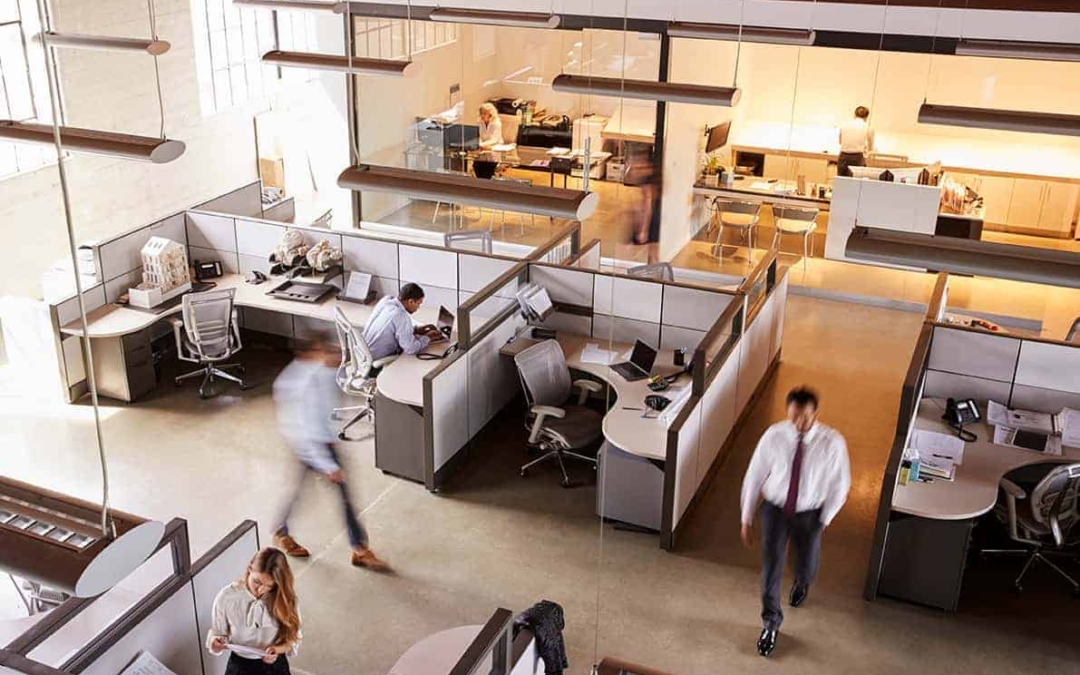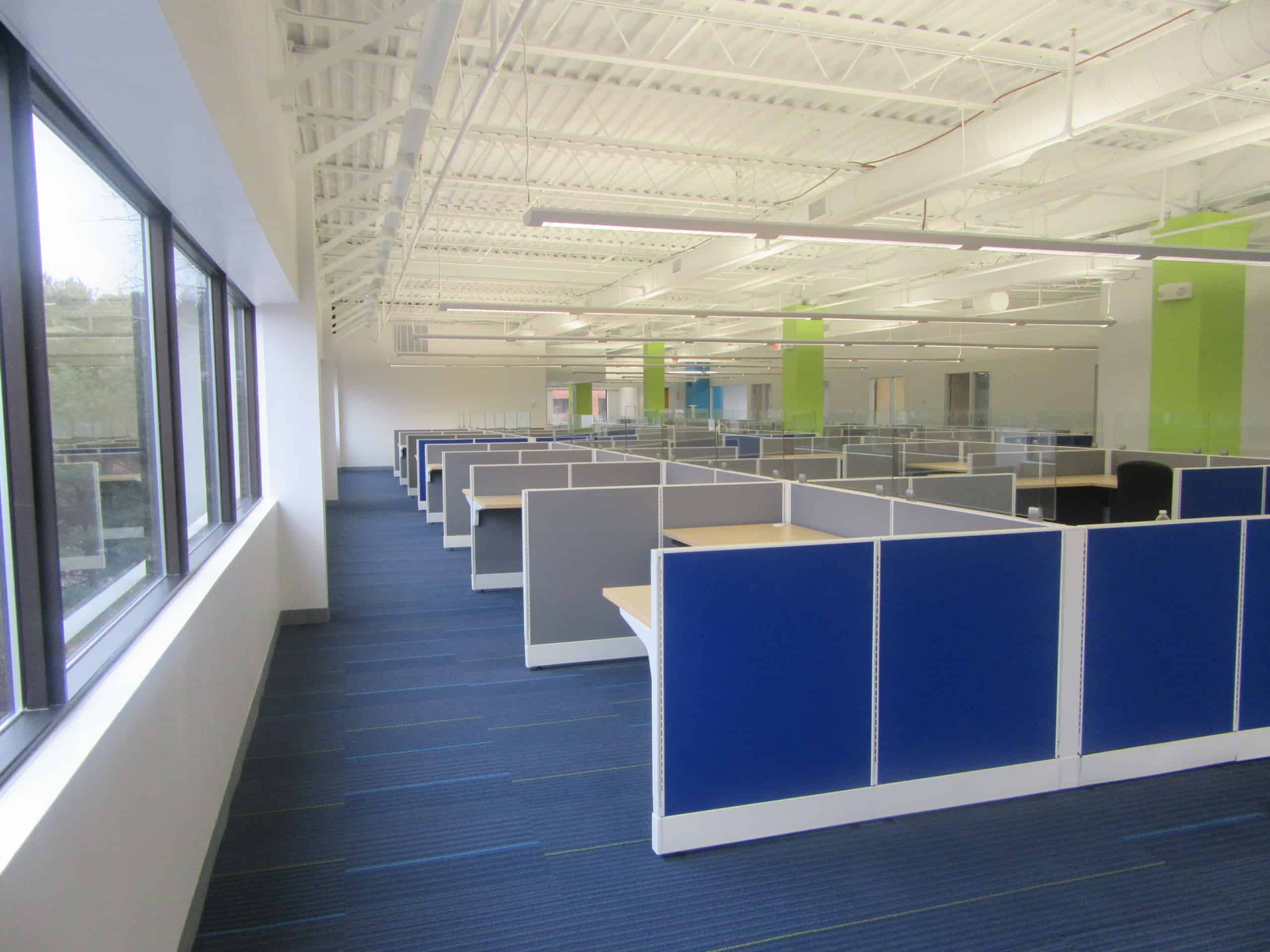How the Cubicle Is Reemerging in Modern Office Design
The cubicle used to be a staple of the modern workplace. Affordable, reconfigurable, and convenient, cubicles were the ideal solution for companies that could not accommodate all of their employees in private offices. But the rise of the open office decades ago, spurred on by Silicon Valley giants and cosmopolitan creative firms, quickly dispatched the cubicle; it was no longer as prevalent in many offices. The belief was that cubicle walls and private workspaces hindered collaboration—and that a completely open floor plan was better for productivity. For the past several years, however, the popularity of cubicles has risen again.
What is a Cubicle?
A cubicle is a piece of office furniture consisting of multiple panels that form a small, individual workstation. Together, individual cubicles create a more efficient workplace by grouping workers in a space that allows for more collaboration and privacy. They were introduced in the late 1960s, part of that time period’s modern office design. There are pros and cons to using cubicles to design an office instead of other office layouts and furniture.
From Open Office Design to The Cubicle Comeback
The open office model started to decline in popularity during the early 2000s. It was particularly unpopular among workers, who found themselves with very little privacy or personal space. Businesses were slow to adapt to the unpopularity of the open office but, eventually, caught on. Just before the pandemic hit in 2019, the Harvard Business Review published a study on open offices called The Truth About Open Offices. This study is largely viewed as the tipping point in revealing that the largest perceived benefits of the open office, increased collaboration and productivity, were largely myths. The open office was exposed as mostly a cost-savings effort where businesses sacrificed employee privacy and comfort to fit in more workstations and spend less on office furniture and overhead per employee. Suddenly, the open office became “uncool” and workers had a reputable study to use in justifying why they did not want to be crammed into bench seats in the open office.
Soon after that, the cubicle was back in style as a tried-and-true solution that provided more worker privacy. In 2020, the pandemic hit and many offices closed. As offices reopened, cubicle walls helped with social distancing and stopping the spread of airborne viruses. There was a rush to provide protection and privacy for employees who could not work from home. Fast forward to 2024, and COVID has become much more of an afterthought in office design, yet cubicles remain very popular.
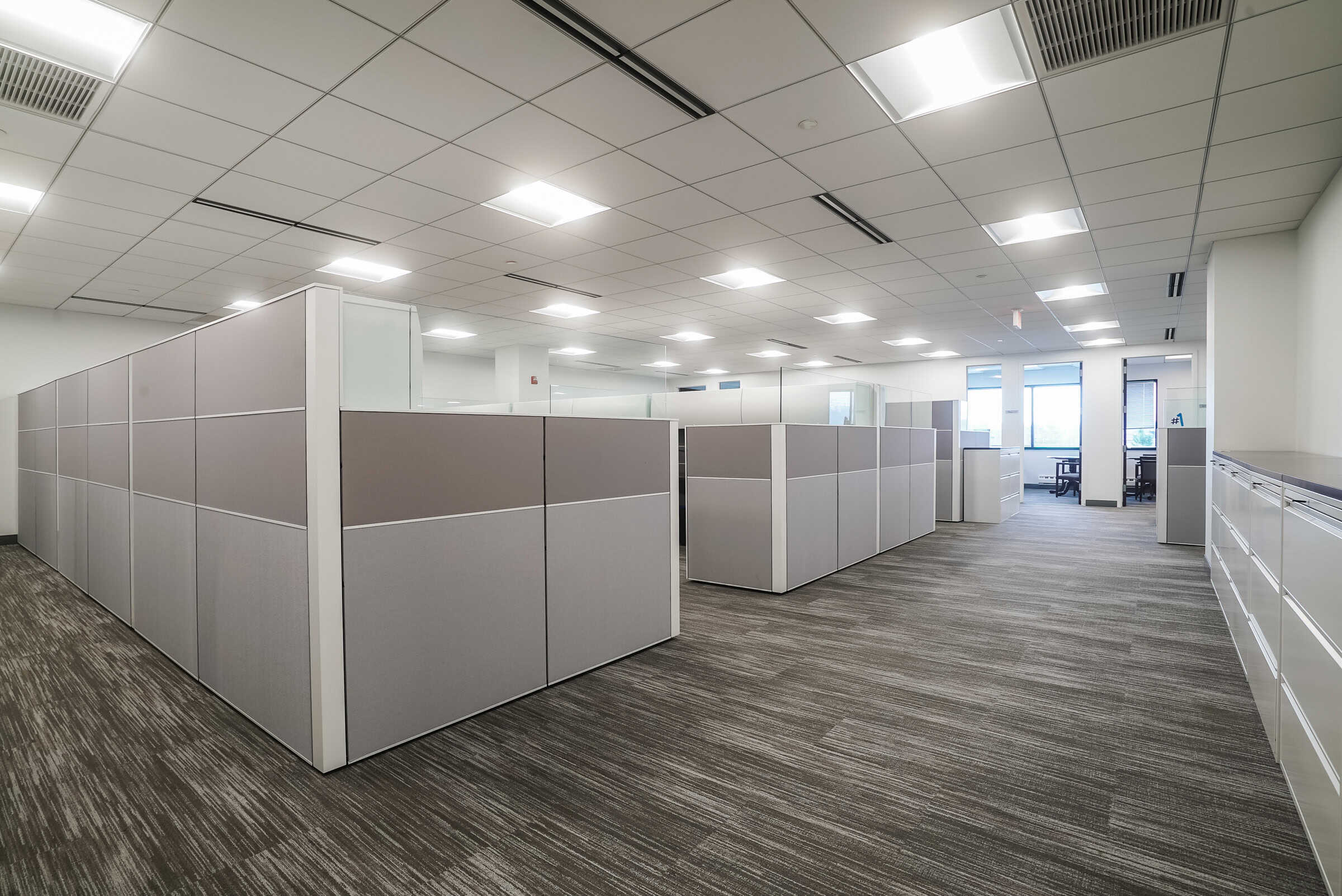
The Modern Office (Trends in Office Design)
The single biggest defining element of modern office design today is how offices are adjusting to accommodate the hybrid remote work schedule. The hybrid office should be about flexibility. Flexible office layouts and office furniture help businesses maximize space and balance varying employee preferences and needs.
There are two primary considerations in terms of workstations in the hybrid workplace:
- Businesses are aware that many employees prefer to have some privacy in the workplace.
- The hybrid remote model means that people are in the office less than full-time and fewer workstations are needed than before the pandemic hit, when everyone was in the office.
Privacy
Cubicle-heavy office layouts from decades ago were built well for privacy. This additional personal space is more popular than ever with employees who have become accustomed to working from home. As “The Truth About Open Offices describes,” women overwhelmingly prefer to have privacy at the office. In the modern office, workstation privacy is a currency that attracts talent; in those terms, cubicles are the next best thing to a private office.
Hybrid Remote
Since the in-office workforce is different each day, the office must be designed more flexibly than in years past. Naturally, workstations will be shared and not dedicated to a single employee, to avoid an excessively large and inefficient layout. How does the cubicle help recalibrate the open office to meet the needs of the modern workforce? Office designers are bringing the cubicle back, creating a hybrid between the open office and a layout with more privacy and fewer distractions.
Learn more about office design trends that are popular in 2024.
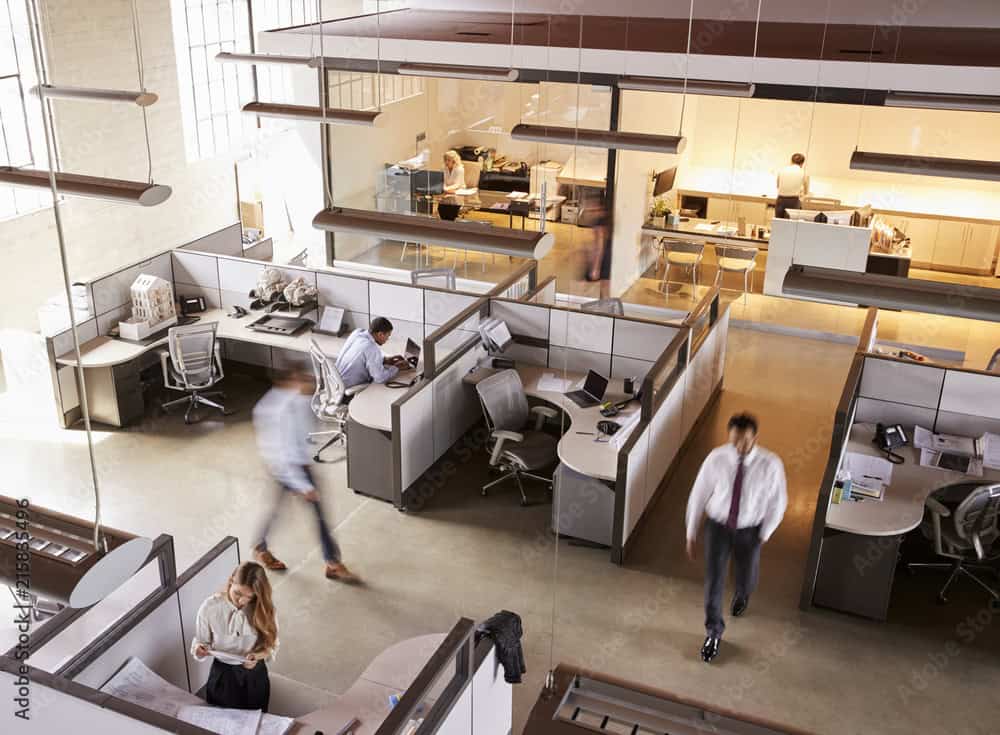
Cubicle Types and Office Design Considerations
As businesses and workplaces continue to change, so does cubicle design. Employers are increasingly focused on creating a productive, welcoming, and collaborative workplace for employees.
These changes demonstrate that the cubicle has a time and place in the office. There are many different types of cubes; each plays a different role in how office furniture and office design create solutions to modern challenges in the office.
Open Cubicles

Open cubicles encourage collaboration and communication among employees. They have low cubicle walls so that employees can see and talk to each other easily.
Low-Wall Cubicles
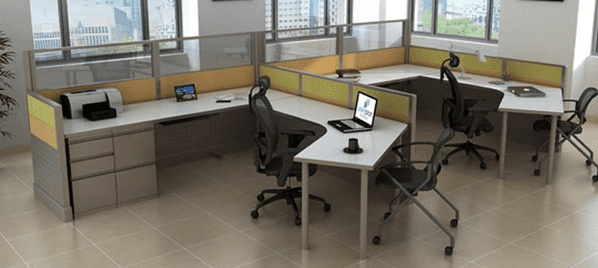
Low-wall cubicles are a compromise between open and high-wall cubicles. They have walls that are tall enough to provide some privacy but not so high that they block sight lines and make it difficult to talk to other employees.
Circular Cubicles

Circular cubicles are a modern, more stylish addition to the workplace. They are designed to encourage collaboration and communication and can be reconfigured easily.
L-Shaped Cubicles
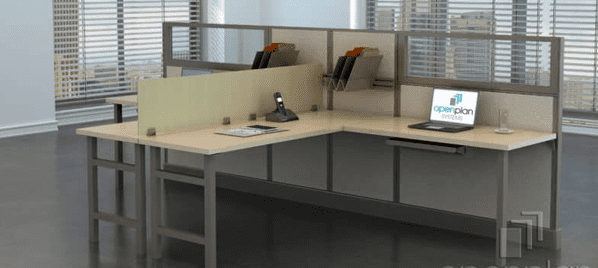
L-shaped cubicles maximize office space and efficiency. The two cubicle walls offer privacy and reduce noise; these cubicles are budget-friendly.
Call Center Cubicles
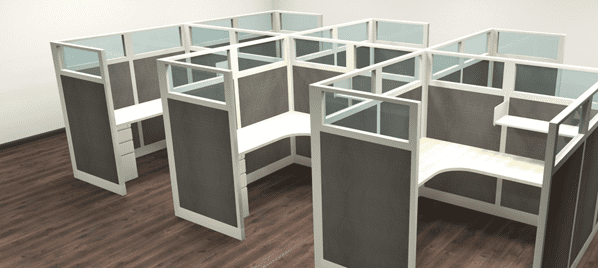
Call-center cubicles are for employees who spend most of their days on the phone. They are taller than standard cubicles to provide more privacy and offer greater noise reduction.
Modular Cubicles
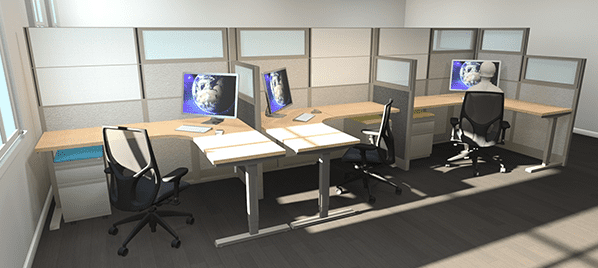
Modular cubicles are like standard cubicles but with more flexibility for custom configuration and layout changes.
Popular Cubicle Layouts
A combination of cubicle styles and layouts can help meet the needs of the modern office. Here are some of the most common layouts for groups of cubicles.
Bullpen
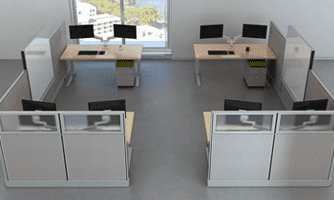
A bullpen is an open floor set-up where employees work at separate cubicles or “workstations” but there are no partitions to offer privacy.
Straight Run
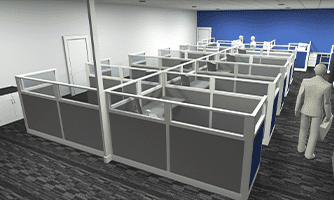
A straight run, where rows and columns of identical cubicles are organized in a grid, is the most traditional cubicle layout.
Private Office / Enclosed
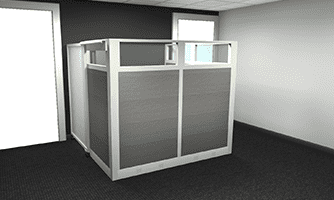
A private or enclosed office cubicle is a layout where each station has four walls and a door. This layout offers the most privacy and helps minimize sound and distractions.
3-Person Workstation

A 3-person workstation allows 3 people to work at the same desking unit. Each person has a separate space for working, similar to a traditional cubicle. These workstations typically have panels or screens that separate employees.
The Drawbacks of the Open Office Plan
Open Settings Make for Noise Distractions
It can be difficult to focus when there is a meeting going on just a few feet away, when one of your colleagues openly approaches you to ask about your weekend, or even when you can hear the person beside you clicking on the keyboard. Combine these distractions with how a lack of barriers allows noise to travel and amplify, and you have workplace that can make concentration impossible.
Open Offices Make for Visual Distractions
It’s not just audible noise that makes it hard for employees to focus, it’s also visual noise. Among that noise could be seeing someone struggle with a task, noticing a conversation, picking up on what’s on a colleague’s computer monitor. Movement and action all around can easily break concentration.
Open Offices Make Employees Feel Exposed
Studies have shown that workers in an open setting feel reluctant to have work-oriented conversations, nervous about their work habits, and even insecure about their appearance, because they feel exposed to scrutiny at the workplace. Researchers call it the “fishbowl effect”—the feeling that you are being watched all the time. As a result, more employees opt to work from home when possible and they get less done when they are in the office.
How Cubicles Can Fix the Open Office
Employers are rediscovering the benefits that made the cubicle, a staple of office past office design, so popular in the first place. Here are a few of those benefits:
Cubicles Provide Privacy
They may not have a locking door, but cubicles provide private workspace for employees, space where they don’t feel exposed to colleagues and supervisors. This sense of privacy can greatly increase productivity and workplace satisfaction.
Cubicles Reduce Distractions
The cubicle is a semi-enclosed workspace that lets an employee focus on the task at hand without the distraction of errant conversations and visual noise.
Cubicles Can Be Personalized Easily
Because an employee’s cubicle is his or her own private workspace, employees can arrange the space the way they like it—and the way that lets them work most efficiently. This provision is not just a boon to productivity, but a huge boost to morale, which helps companies retain the talent they have worked so hard to attract.
Cubicles Reduce Noise
Cubicle walls are generally designed with sound-absorbent materials. They don’t just provide quiet space for those who use them, but help reduce distractions.
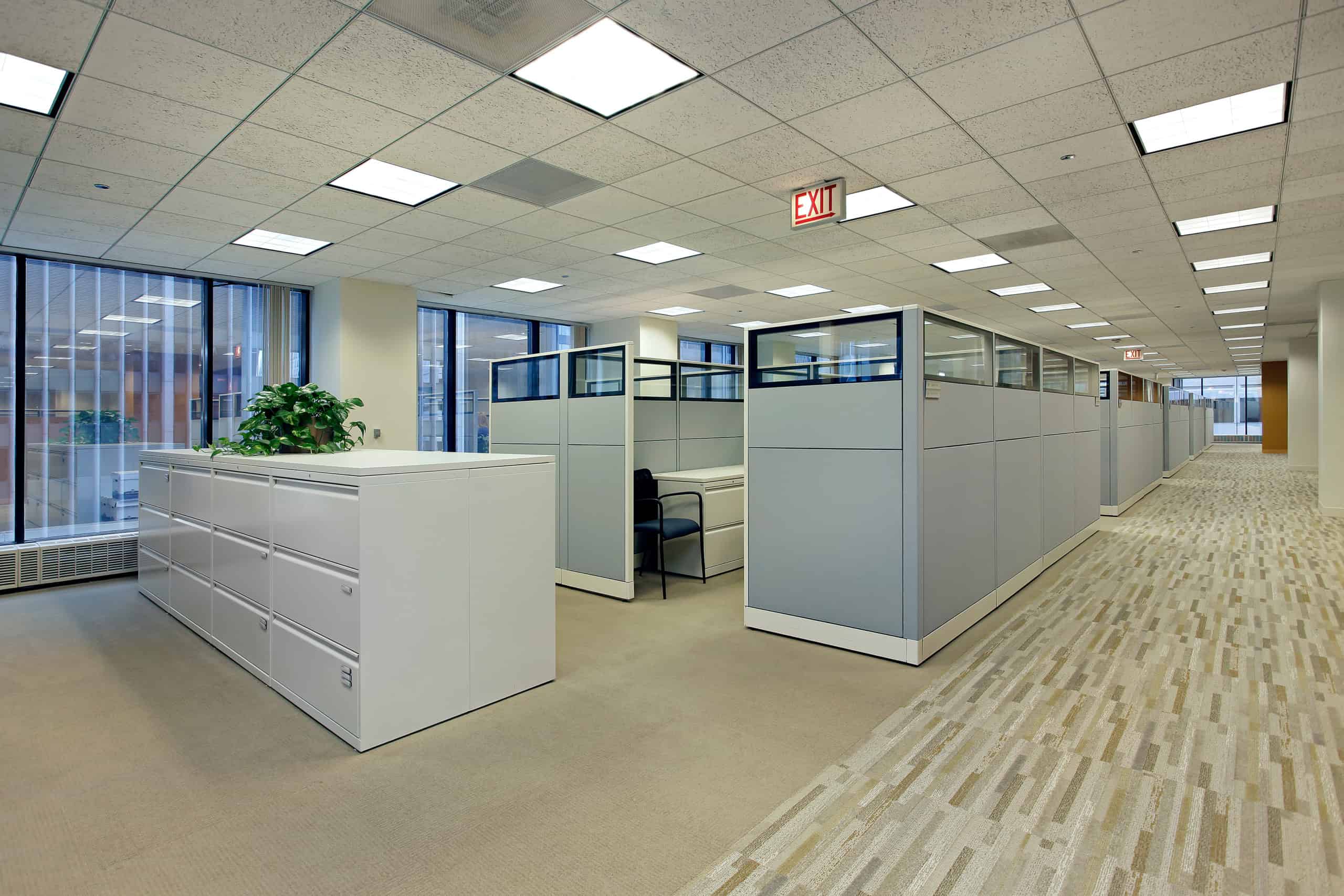
But Are Cubicles Appropriate for Every Office Design?
The cubicle offers a range of advantages to your office, benefits that boost productivity and keep your talent happy. But they are not a one-size-fits-all solution. There is a reason that the cubicle-heavy floor plan has fallen by the wayside—cubes have their advantages, but they don’t fulfill every workplace need.
Cubicles are great for offering employees an environment in which they can focus, but what about tasks that require collaboration and open communication?
Recent studies have shown that a well-functioning office requires balance, which is why JCI is a big advocate of flexible office design. Cubicles play an important role in a balanced plan, but the plan needs more. Members of collaborative teams—marketing or creative, for example—may sometimes benefit from using cubicles, but they often need to engage teammates in collaborative settings, such as open benches or huddle areas.
Likewise, individual employees often benefit from the cubicle’s focused environment, but when work becomes stressful or frustrating, they may prefer to take it to a café, nook, or breakout area. These workspaces go a long way toward letting talent do their jobs without undue pressure.
The key is to have a variety of workspaces that meet your workers’ specific needs. Plan for flexibility, balance, and movement throughout the office.
How Your Furniture Dealer Can Help
Installing cubicles can make your office a happier, quieter, and more productive workplace, but it is important to be sure that you maximize their appropriate use. This is where your furniture dealer comes into play.
An experienced furniture dealer can not only help you find the furnishings that best fit your needs and suit your branding and aesthetics, but they can also assess your office space to determine the most efficient way to arrange those furnishings and integrate any new pieces, like cubicles, with existing IT infrastructure. They can even handle delivery and installation.
Moreover, a good furniture dealer can help you find just what combination of private and collaborative workspaces suit the diverse needs of your staff, delivering a balanced and flexible office that will keep your talent happy and maximize productivity. To ensure that you get the most out of your office cubicles, work with a dedicated furniture dealer who understands your needs.


